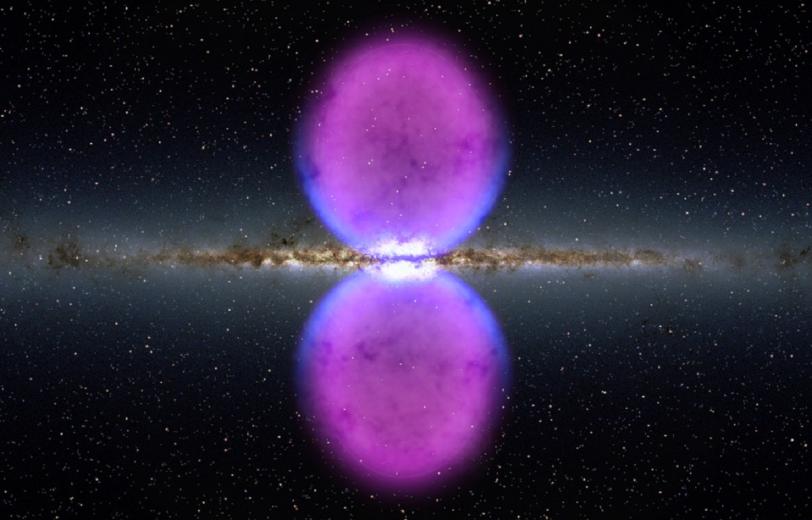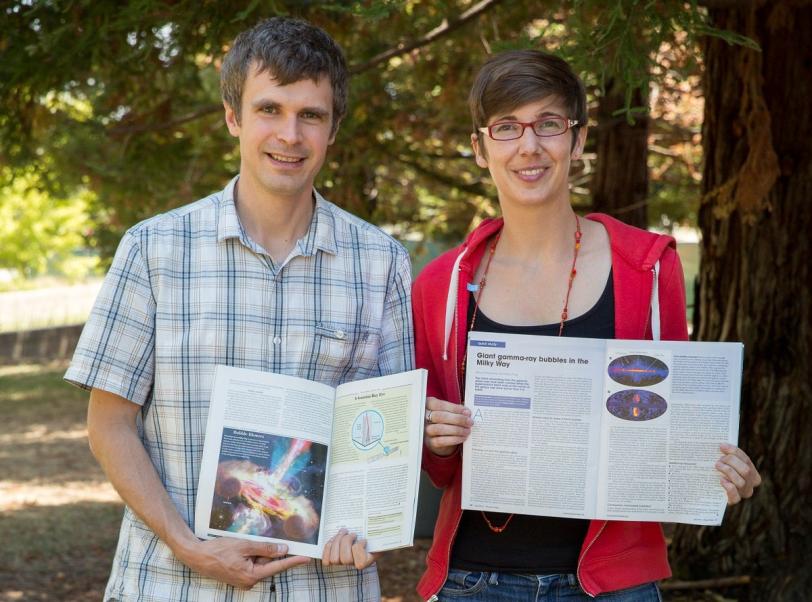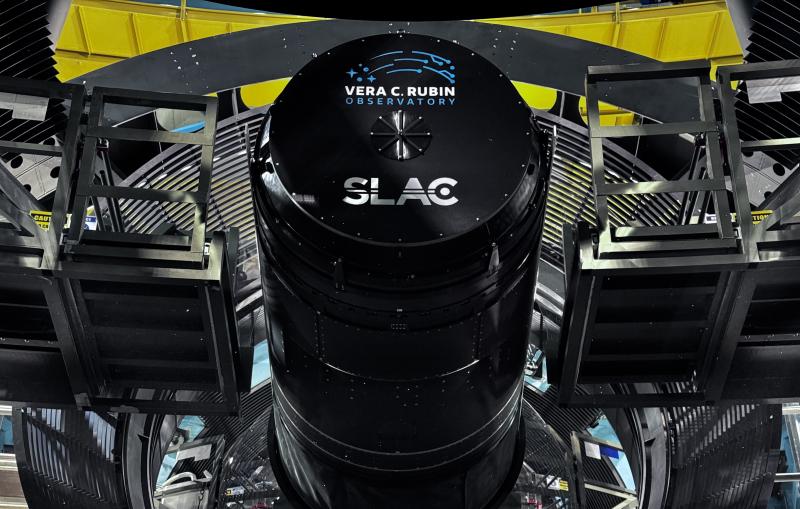Despite Extensive Analysis, Fermi Bubbles Defy Explanation
With two SLAC researchers in the lead, an analysis of the enigmatic Fermi bubbles has narrowed down the number of possibilities for their origin, but hasn't completely solved the puzzle.
Scientists from Stanford and the Department of Energy’s SLAC National Accelerator Laboratory have analyzed more than four years of data from NASA’s Fermi Gamma-ray Space Telescope, along with data from other experiments, to create the most detailed portrait yet of two towering bubbles that stretch tens of thousands of light-years above and below our galaxy.
The bubbles, which shine most brightly in energetic gamma rays, were discovered almost four years ago by a team of Harvard astrophysicists led by Douglas Finkbeiner who combed through data from Fermi’s main instrument, the Large Area Telescope.
The new portrait, described in a paper that has been accepted for publication in The Astrophysical Journal, reveals several puzzling features, said Dmitry Malyshev, a postdoctoral researcher at the Kavli Institute for Particle Astrophysics and Cosmology who co-led on the analysis.
For example, the outlines of the bubbles are quite sharp, and the bubbles themselves glow in nearly uniform gamma rays over their colossal surfaces, like two 30,000-light-year-tall incandescent bulbs screwed into the center of the galaxy.
Their size is another puzzle. The farthest reaches of the Fermi bubbles boast some of the highest energy gamma rays, but there's no discernable cause for them that far from the galaxy.
Finally, although the parts of the bubbles closest to the galactic plane shine in microwaves as well as gamma rays, about two-thirds of the way out the microwaves fade and only gamma rays are detectable. Not only is this different from other galactic bubbles, but it makes the researchers’ work that much more challenging, said Malyshev's co-lead, KIPAC postdoctoral researcher Anna Franckowiak.
"Since the Fermi bubbles have no known counterparts in other wavelengths in areas high above the galactic plane, all we have to go on for clues are the gamma rays themselves," she said.
What Blew The Bubbles?
Soon after the initial discovery theorists jumped in, offering several explanations for the bubbles’ origins. For example, they could have been created by huge jets of accelerated matter blasting out from the supermassive black hole at the center of our galaxy. Or they could have been formed by a population of giant stars, born from the plentiful gas surrounding the black hole, all exploding as supernovae at roughly the same time.
"There are several models that explain them, but none of the models is perfect,” Malyshev said. "The bubbles are rather mysterious.”
Creating the portrait wasn't easy.
"It's very tricky to model," said Franckowiak. "We had to remove all the foreground gamma-ray emissions from the data before we could clearly see the bubbles."
From the vantage point of most Earth-bound telescopes, all but the highest-energy gamma rays are completely screened out by our atmosphere. It wasn't until the era of orbiting gamma-ray observatories like Fermi that scientists discovered how common extra-terrestrial gamma rays really are. Pulsars, supermassive black holes in other galaxies and supernovae are all gamma rays point sources, like distant stars are point sources of visible light, and all those gamma rays had to be scrubbed from the Fermi data. Hardest to remove were the galactic diffuse emissions, a gamma ray fog that fills the galaxy from cosmic rays interacting with interstellar particles.
"Subtracting all those contributions didn't subtract the bubbles," Franckowiak said. "The bubbles do exist and their properties are robust." In other words, the bubbles don't disappear when other gamma-ray sources are pulled out of the Fermi data – in fact, they stand out quite clearly.
Franckowiak says more data is necessary before they can narrow down the origin of the bubbles any further.
"What would be very interesting would be to get a better view of them closer to the galactic center," she said, "but the galactic gamma ray emissions are so bright we'd need to get a lot better at being able to subtract them."
Fermi is continuing to gather the data Franckowiak wants, but for now, both researchers said, there are a lot of open questions.
For questions or comments, contact the SLAC Office of Communications at communications@slac.stanford.edu.
SLAC is a multi-program laboratory exploring frontier questions in photon science, astrophysics, particle physics and accelerator research. Located in Menlo Park, Calif., SLAC is operated by Stanford University for the U.S. Department of Energy's Office of Science.
SLAC National Accelerator Laboratory is supported by the Office of Science of the U.S. Department of Energy. The Office of Science is the single largest supporter of basic research in the physical sciences in the United States, and is working to address some of the most pressing challenges of our time. For more information, please visit science.energy.gov.







